The Apple iPhone 11, 11 Pro & 11 Pro Max Review: Performance, Battery, & Camera Elevated
by Andrei Frumusanu on October 16, 2019 8:30 AM ESTCamera - Low Light Evaluation
It’s hard to argue against the fact that over the last 2 years, Apple has largely fallen behind in terms of low-light photography. The advent of computational photography with new dedicated night modes, along with competitor devices which have massively more performant camera hardware, meant that the iPhone XS ended up being one of the least competitive devices in low light conditions. Some developers out there have even tried to address this gap with third-party camera applications which deliver their take on computational photography night mode capture.
Apple seems to have made note of this and the new iPhone 11 series now does address this missing feature. Let’s see how it holds up against the fierce competition:
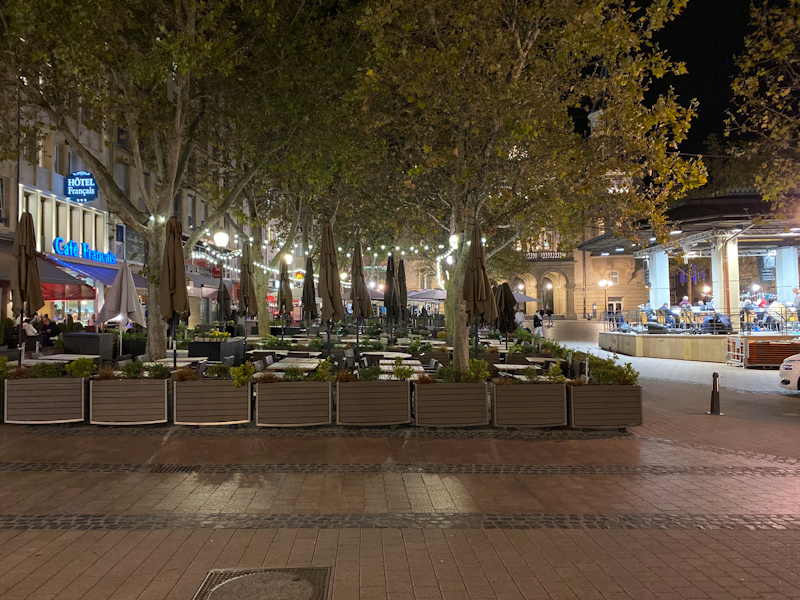
[ iPhone 11 Pro ] - [ iPhone XS ] - [ iPhone X ]
[ S10+(S) ] - [ S10+(E) ]
[ Pixel 3 ] - [ Mate 30 Pro ]
[ P30 Pro ] - [ Xperia 1 ] - [ G8 ]
Starting off with a low-light, yet still artificially illuminated scenario, we encounter the first aspect of Apple’s new camera: the night mode isn’t a dedicated mode that one can manually select. Rather, it's a mode that gets triggered automatically depending on the ambient light detected by the phone. In this scene, there was too much light available, and as such the phone wasn't able to trigger Night mode.
That isn’t to day that the iPhone falls behind, the main camera is still very much able to produce some excellent results. In such medium light scenarios, the telephoto lens’ wider aperture now allows the camera to actually use the module rather than falling back to the main sensor and cropping the scene, which is what the XS did.
Unfortunately, the wide-angle lens’ results here are just bad and it’s all just blurry. Huawei and Samsung clearly both dominate here in terms of low-light quality, with either better sensors such as the Mate 30 Pro, or making use of Night Mode on the wide-angle unit, something which isn’t available for the iPhone 11.
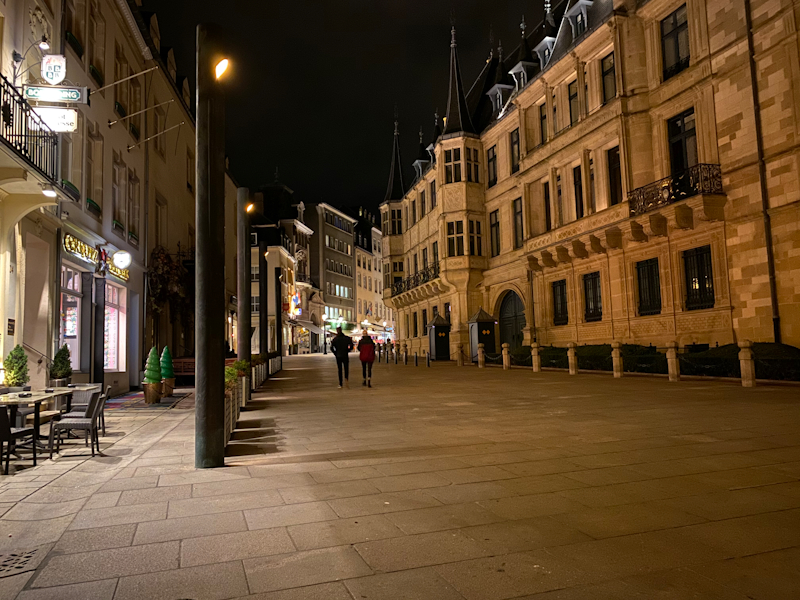
[ iPhone 11 Pro ] - [ iPhone XS ] - [ iPhone X ]
[ S10+(S) ] - [ S10+(E) ]
[ Pixel 3 ] - [ Mate 30 Pro ]
[ P30 Pro ] - [Xperia 1 ] - [G8 ]
Going to a darker scene, we now finally see Apple’s Night Mode in action. Apple’s non-night mode shot is actually more representative of the actual brightness of the scene at the time, but Night Mode really improves the amount of detail throughout the scene. Apple’s implementation here is superior to Samsung’s and Google’s, as it’s able to retain more detail and has a better handling of the noise. Samsung has the odd situation that the new Night Mode on the Snapdragon variants is inferior in quality to the Exynos based models, making things quite blurry. Huawei’s specialized low light RYYB sensor still is the best low-light camera.
It’s odd to see that Apple’s algorithm doesn’t attempt to bring down the highlights, as such the signs on the left which are still very much blown out and overexposed.
I tried to capture a picture with the Night Mode exposure set to the very maximum 10 seconds as made available in Apple’s camera UI, however the end result was always repeatedly always capped at the exposure the camera automatically selected, even if it did appear as if it’s capturing a 10 second shot. I retested this on the newest iOS 13.2 and things did change, as it was indeed able to capture a very different shot – so it seems the Night Mode behavior on iOS 13.1 is still bugged.
The iPhone’s 11 series' wide-angle module continues to be pretty terrible in low-light.
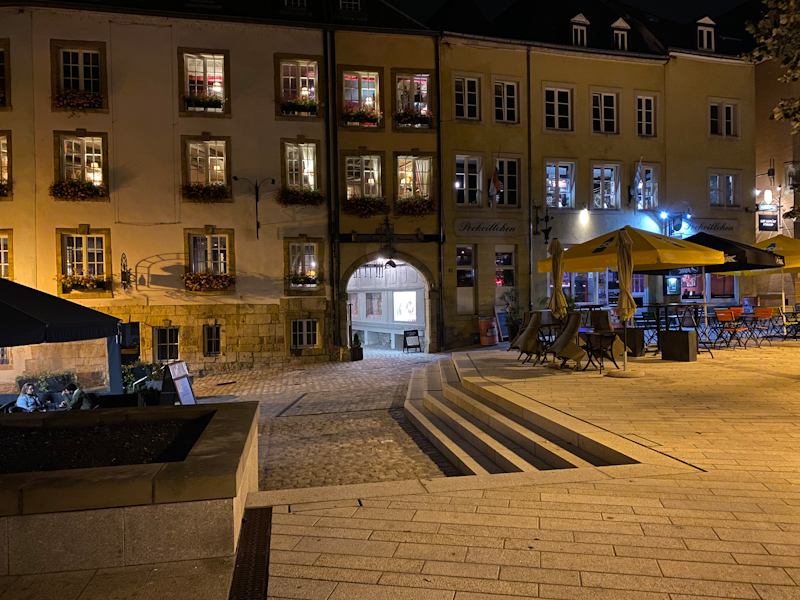
[ iPhone 11 Pro ] - [ iPhone XS ] - [ iPhone X ]
[ S10+(S) ] - [ S10+(E) ]
[ Pixel 3 ] - [ Mate 30 Pro ]
[ P30 Pro ] - [ Xperia 1 ] - [ G8 ]
Apple’s night mode here continues to impress as it’s able to reproduce an excellent representation of the scene with a lot of detail. Google’s Night Sight is comparable, or even better, in detail, however the colors are too vivid.
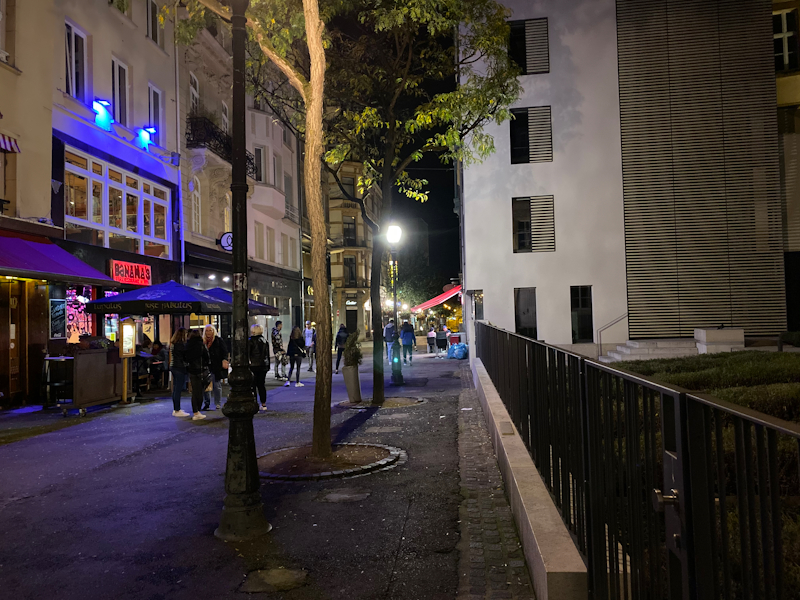
[ iPhone 11 Pro ] - [ iPhone XS ] - [ iPhone X ]
[ S10+(S) ] - [ S10+(E) ]
[ Pixel 3 ] - [ Mate 30 Pro ]
[ P30 Pro ] - [ Xperia 1 ] - [ G8 ]
We continue to observe that in more well-lit scenarios that the night mode doesn’t engage. Even without it, the new iPhone 11 is an improvement over the XS.
The wide-angle module remains terrible and frankly I’m a bit puzzled why it does so bad even in a more well-lit scene like this one. The phone gets pretty much embarrassed by all the other devices.
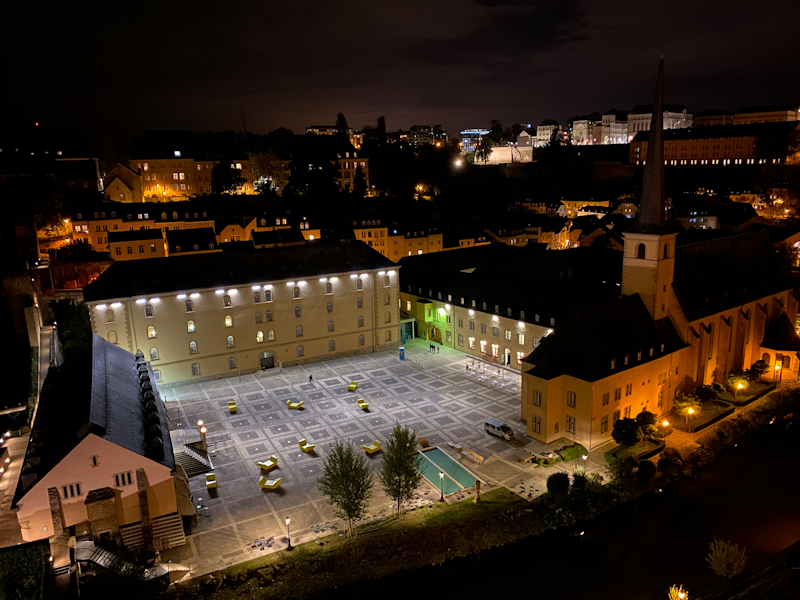
[ iPhone 11 Pro ] - [iPhone XS ] - [iPhone X ]
[ S10+(S) ] - [ S10+(E) ]
[ Pixel 3 ] - [ Mate 30 Pro ]
[ P30 Pro ] - [Xperia 1 ] - [G8 ]
One thing we notice about the new Night Mode is that it’s not really able to bring out details in areas where the sensor doesn’t see anything. For example, in this scene the roof of the abbey remains clipped to black, while other devices such as the S10 or the Pixel are able to bring out the roof’s structure and details. The darker it gets, and as long as there’s some brighter elements to the scene, we’re seemingly hitting dynamic range limitations on Apple’s night mode.
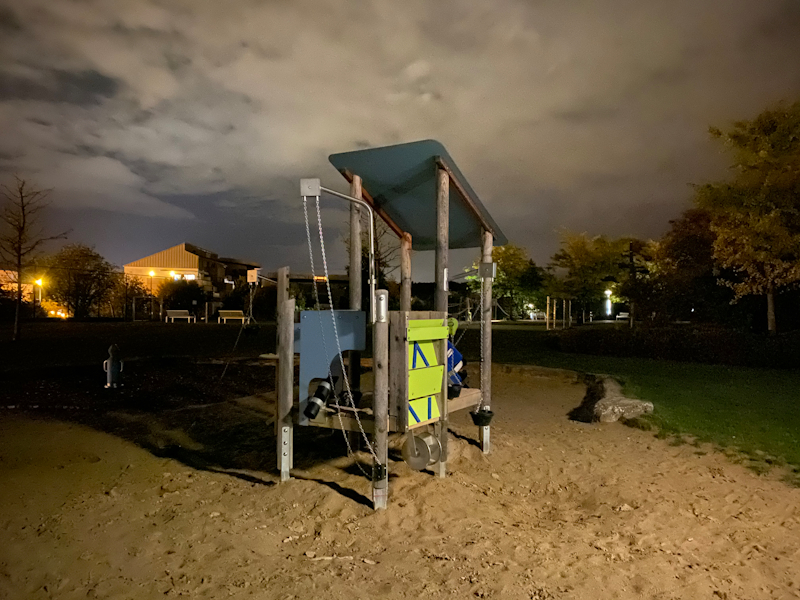
[ iPhone 11 Pro ] - [ iPhone XS ] - [ iPhone X ]
[ S10+(S) ] - [ S10+(E) ]
[ Pixel 3 ] - [ Mate 30 Pro ]
[ P30 Pro ] - [ Xperia 1 ] - [ G8 ]
In more uniformly dark areas, the iPhone is able to extract a ton of light, but in areas where the sensor just isn’t sensitive enough and it’s not able to provide any data for the algorithm to accumulate over time, it leads in some odd looking results such as this extremely pronounced shadow of the play castle.
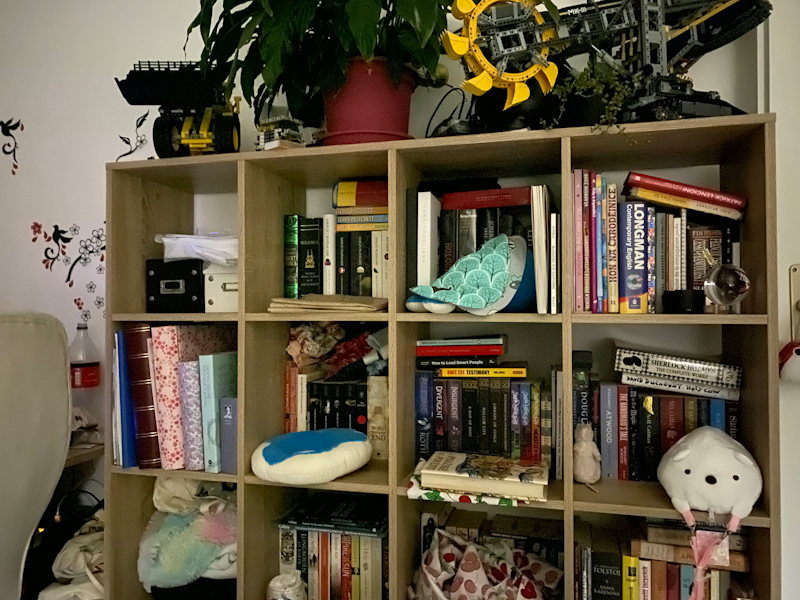
[ iPhone 11 Pro ] - [ iPhone XS ] - [ iPhone X ]
[ S10+(S) ] - [ S10+(E) ]
[ Pixel 3 ] - [ Mate 30 Pro ]
[ P30 Pro ] - [ Xperia 1 ] - [ G8 ]
Here again, in a very uniformly lit but still extremely dim scene, the iPhone 11 is able to bring out a ton of light and the result here is significantly brighter than how the scene was in reality. The iPhone beats Google and Samsung in terms of detail and only Huawei’s devices remain as the better rivals.
Low Light Conclusion – A Much Needed Feature Added, Wide Angle Lacking
Overall, Apple’s addition of the new night mode very much elevates the camera capture ability of the iPhone 11 series. It was as solemnly needed feature given that almost all other vendors in the industry have embarked on the computational photography train.
Apple’s implementation shines in a few regards: First of all the fact that it gets selected automatically rather than it being a dedicated mode that you have to switch to is a significant plus. as well as a very large practical advantage over other vendor’s camera experiences.
Quality-wise the pictures that the iPhone 11 series is able to produce in low light is top of the line and is challenged only by Huawei’s massive specialized camera sensors in terms of detail that it’s able to capture. There are a few limitations – for example the phone isn’t able to bring out details in areas where the sensor just doesn’t see anything, particularly scenes with brighter objects requiring a wider dynamic range in the capture is where things hit a snag, although details are still excellent even in these scenarios.
The biggest disappointment was the wide-angle camera. Here it’s not only that Apple’s night mode photography isn’t available for this unit, but the module doesn’t even compete against phones without their respective night modes enabled. So the iPhone 11 series is utterly put to shame when they do enable it. I do hope Apple is able to iterate on its processing for this unit as currently it’s just outright terrible and not competitive.
I do have a feeling that we’ll be seeing further updates and improvements from Apple in improving the various aspect of the camera. Already I did notice that iOS13.2 fixes exposures longer than 3 seconds for the night mode, and there’s of course the question of how Deep Fusion behaves in low-light scenarios where the night mode doesn’t kick in.










242 Comments
View All Comments
BradleyTwo - Monday, October 21, 2019 - link
My apologies if this has been disclosed already, but would it be possible to ask if Apple supplied these phones for testing?The reason I ask is that there is quite a long thread over at a popular Mac rumors forum where a number of us are concerned at the variable screen quality on the iPhone 11 Pro and Pro Max.
Many of us, myself included, have received a suboptimal screen, in that it was a dim, murky yellow display (the less polite of us have called them p-stained), while others have received screens which are not uniformly lit.
We have generally exchanged them to receive marginally better units, a few of which have been perfect, but a disappointing majority of the exchanges are often still below the apparently impressive characteristics of the displays discussed in the review.
As this is not mentioned in the various iPhone 11 Pro reviews, a number of us have formed suspicions that Apple has cherry picked the best screens to supply to reviewers.
A clarification whether Apple did indeed supply the units, or if they were bought off the shelf, would be much appreciated.
techsorz - Monday, October 21, 2019 - link
Apple calibrates each device, this is what XDR essentially is. However this will create better uniformity across displays than make them as different as you say.Dim, murky yellow is probably caused by you not disabling true-tone and auto-brightness. Otherwhise you have a very faulty unit, as this display should be bright enough to nearly burn out your retina. (Exaggeration)
Not uniformly lit could be an error, just return it in this case. Clearly Apple wouldn't supply faulty hardware to anyone on purpose, not testers or consumers.
Andrei Frumusanu - Monday, October 21, 2019 - link
These are Apple review samples, but in our experience and testing they don't differ from commercial models.BradleyTwo - Monday, October 21, 2019 - link
Thank you for the clarification. It would of course be negligent for Apple PR not to ensure reviewers receive fully tested units.I can assure you, however, that when it comes to the screen, the number of less than optimal units being sold at retail is probably higher than you might think. While these are most likely all within manufacturing tolerances for QC purposes, some of them I highly doubt Apple would send to reviewers.
Oh well, at least the 14 day return period provides the opportunity to exchange. The "screen lottery" we call it.
Andrei Frumusanu - Tuesday, October 22, 2019 - link
Apple would have to be very misleading in providing fully sealed units. It's possible that some retail units perform worse but over the years we've never really encountered such a unit.s.yu - Tuesday, October 22, 2019 - link
"It would of course be negligent for Apple PR not to ensure reviewers receive fully tested units."lol! Samsung Fold.
joms_us - Tuesday, October 22, 2019 - link
It is pity though the so-called fastest SoC is not even close to these Android phones which are typically half the speed of fastest desktops. How do you expect people to believe A13 is faster than i-9900K or Ryzen 3950X? Where GeekBiased and jurassic SP2006? LOLhttps://youtu.be/ay9V5Ec8eiY?t=514
https://youtu.be/DtSgdrKztGk?t=423
https://youtu.be/PkVW5eSXKfw?t=115
I'd say cut the crap and show us real-world results not cherry-picked worthless numbers from benchmarking tools.
Quantumz0d - Tuesday, October 22, 2019 - link
The fanboys man they are so blinded by reality, Apple was able to set a perfect world utopian dream for them. Can't fix stupid.I used to run Sultanxda kernel on my OP3 with SD820 processor the SD821 had higher clock speed over 820 but guess what OP screwed it up or Qualcomm didn't provide fix there was Clockspeed crashing at high freq so he disabled it entirely on both big and small. Guess what ? Benches took a massive hit. But UX ? Nope. Infact it improved a lot how is that possible ? I guess Spec and GB only matters right.
Pixel 3 lagged badly due to the RAM issue no one mentions all say its beautiful wonderful amazing. Guess what ? 1080P 60FPS doesn't exist as an option and its auto as Google deems. 4XL no 4K60FPS because less storage. No press mentions.
Coming to this garbage phone. iOS 13 whatever. Same icons, same springboard since 1.1.4 (I used it and JBed it) no desktop no customization to OS. All iPhones on the planet look same just like the brainwash here of ridiculous comparision of a GB (bullshit bench) and Spec score. Masterpiece of corporate koolaid.
Why don't they mention how the Audio format which records is not in Lossless but in AAC crap unlike my V30 does with the 192KHz 24Bit option in FLAC with Limiter and Gain switch or the Video mode which had full manual Pro controls or even the camera having any Manual options. All ASUS, Samsung, LG, Sony, OnePlus, Huawei offer Pro camera forget Pro Video which only LG and Sony do. But No one cares, simpletons only care about A series marketing BS.
The worst of all no Filesystem. $1000 device which doesn't even have a Filsystem usable by end user or has an option to install the apps off the AppStore. Nor any SD expansion slot to be prepared for emergency. But people are riling up and getting worked over the ARM masterrace LMAO with BGA MacBook Pro with 1 USB C port. Bonus is, to develop iOS app you must pay $99 yearly fee AND own that BGA Soldered KB/Touchpad/Battery/SSD macbook because XCode !!
The abomination design. Display mutilation for 3 years while heralding best colors best display LOL. Very funny.
And no 3.5mm jack. Because Apple wanted to make $5bn off revenue from AirPods (Higher than AMDs entire profit) guess what ? Less than 320kbps data rate LMAO. My LG V30 absolutely destroys this phone to oblivion with its ESS9218P DAC processor only found in Top motherboards from ASUS/GB/MSI. Even Vivo Nex decimates this garbage audio iPhone.
Very very funny how even Qualcomm who spent billions of dollars in R&D for their Centriq ARM server processor by even relegating the teams which worked on post 810, full custom Kryo 820 series and dumping all it out because of the Broadcom M&A (Major beneficiary was Apple due to the Hock Tan connection with Apple, he would sell out all LTE patents) impact and no profit in the ARM server market, forget logistics, capex, ROI, x86 emulation AND 64Bit x86 Emulation legacy code with a massive scale of Linux community around.
But we want ARM A series BGA processor which has world class Spec and GB score and beats Mainstream and HEDT LGA processors.
Claps !
Anand2019 - Tuesday, October 22, 2019 - link
Why are you so angry?Quantumz0d - Tuesday, October 22, 2019 - link
Fed up of the unending talk of x86 vs ARM is one hell even AT forums cpu and oc subforum. Whole thread dedicated to worship this talk.Two Apple ruined smartphones by this policy of removing jack and features while raising the price to moon, Other companies also want greed by forcing people to buy BT earphones which sound garbage, horrid longevity (Need to charge everyday) pushing people to buy trash (Beats) thus making whole market saturated with Apple agenda. Look at Google Pixel 4 they also removed offering Dongle, Samsung, OnePlus. Same thing like Apple very greedy.
Three destroyed the laptops with thin and light obsession. And soldered junk with less and less I/O.
Finally 4th - this corporation is built on American values but is a stooge to cash from China thus enabling more totalitarianship while claiming Liberty on US land. Spineless positiin.